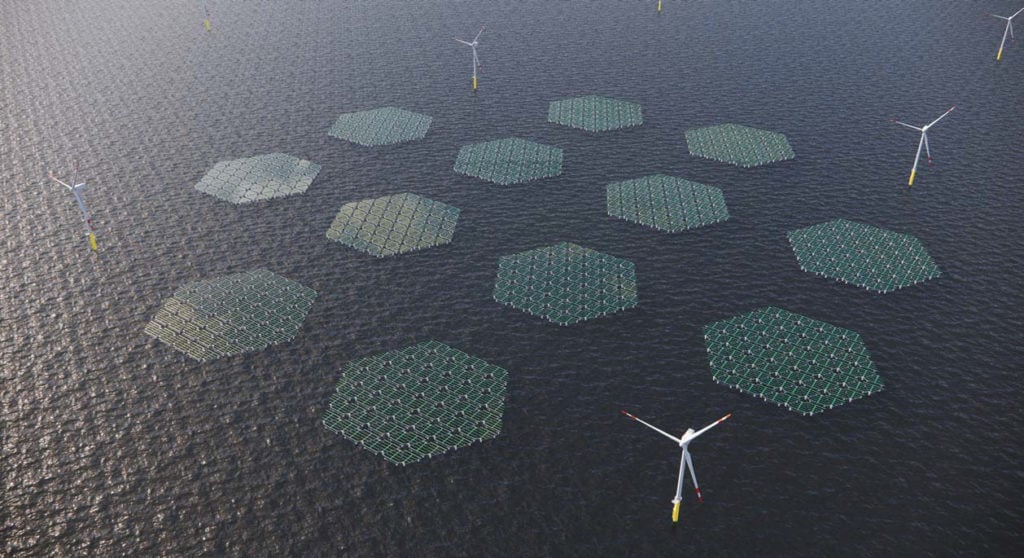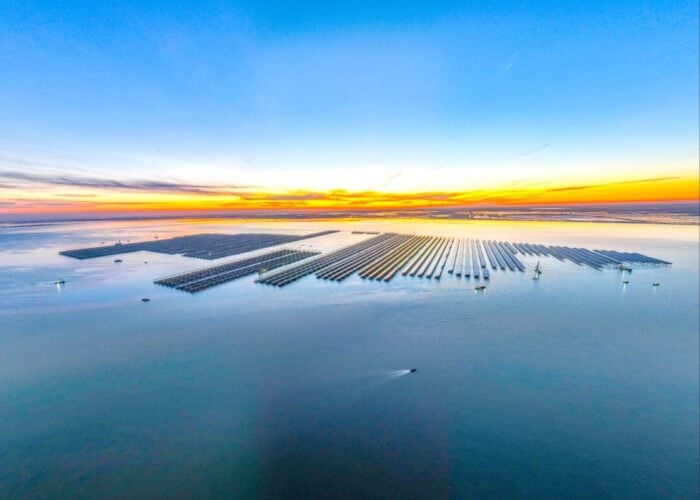
European floating solar (FPV) company SolarDuck has installed an offshore FPV pilot site in the Dutch North Sea.
Alongside German energy company RWE, the 0.5MWp Merganser FPV site was successfully installed around 1.2km off the coast of Scheveningen in the Netherlands. The system consists of six floating platforms connected to a mooring system 20m below the surface, which SolarDuck said it intends to scale up. The platforms are connected and designed to “float several metres above the water, following the waves like a carpet.”
Try Premium for just $1
- Full premium access for the first month at only $1
- Converts to an annual rate after 30 days unless cancelled
- Cancel anytime during the trial period
Premium Benefits
- Expert industry analysis and interviews
- Digital access to PV Tech Power journal
- Exclusive event discounts
Or get the full Premium subscription right away
Or continue reading this article for free
The Merganser project will be monitored remotely with over 180 sensors designed to track structural load, connector and mooring loads, and electrical performance, among other criteria. SolarDuck said the project had been developed to assess the “manufacturing, assembly, offshore installation and maintenance methodologies” necessary to achieve large-scale offshore FPV.
RWE and SolarDuck announced a joint venture to develop offshore solar R&D in March this year , alongside a number of other companies and bodies. In particular, the JV intended to develop an offshore PV site at RWE’s OranjeWind (Hollandse Kust West VII) offshore wind farm.
“Standalone or also in combination with offshore wind farms, offshore floating solar could open up further offshore renewable energy opportunities – especially for countries with lower average wind speeds but lots of sunlight”, said Sven Utermöhlen, CEO of RWE Offshore Wind. “With Merganser, we are gaining unique insights and first-hand experience in one of the most challenging offshore environments in the world.”
The North Sea also plays host to the Oceans Of Energy offshore FPV project, an EU Joint Industry Project between Oceans of Energy and 15 other European companies aiming to develop a 150MW standard format FPV system. Offshore FPV company SeaVolt has also launched a pilot project in the Belgian North Sea, with technology specifically designed for “harsh marine conditions”.
Last year, the Netherlands launched its first offshore FPV tender, seeking up to 100MW of capacity. The country has become one of the leading nations in Europe for the technology which, globally, is largely concentrated in Southeast Asia and China. Rystad Energy found that Southeast Asia – led by Indonesia, the Philippines and Thailand – was expected to add 300MW of FPV in “early 2024”.
China’s Ministry of Natural Resources, for its part, announced in April that offshore solar projects would be restricted to four “types” of sea areas: nuclear power plants’ thermal discharge areas, salt ponds and salt fields, sea aquaculture areas and offshore wind-solar sites.






